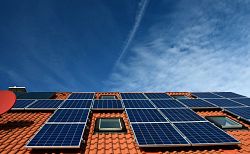

According to the International Energy Agency (IEA), the world is off track to meet the goal of tripling renewable electricity generation by 2030, a target viewed as vital to enable a swift global transition away from fossil fuels. But there are promising signs that the pact of progress may be picking up.
Last December countries agreed on a tripling of renewable power by the end of this decade. However according to IEA analysis, few have yet taken concrete steps to meet this requirement, and on current policies and trends global renewable generation capacity would only roughly double in developed countries, and slightly more than double globally by 2030.
Dr Fatih Birol, the Executive Director of the IEA, said: "The tripling target is ambitious but achievable – though only if governments quickly turn promises into plans of action. Countries worldwide have a major opportunity to accelerate progress towards a more secure, affordable and sustainable energy system".
The IEA found that under the Paris agreement, governments should include targets and policies on renewables in their national action plans for the climate, called nationally determined contributions (NDCs). Many currently fail to do so, even though vast increases in renewable power are essential to meeting the treaty's aspiration of limiting temperatures rises to 1.5c above pre-industrial levels.
The IEA analysed the domestic policies and targets of nearly 150 countries and found they would result in about 8,000GW of renewable energy capacity by 2030. That amount is about 70% of what is necessary to reach 11,000GW of capacity, the amount needed for the tripling goal agreed at the COP28 UN climate summit in Dubai last year.
Solar power makes up about half of the capacity governments are planning to install, with wind making up about a quarter. Heymi Bahar, a Senior Energy Analyst at the IEA and Co-author of the report COP28: Tripling Renewable Capacity Pledge, said: "There is a gap, but the gap is bridgeable".
Last year there was a record increase in renewable capacity, amounting to about 560GW added in one year, a 64% increase on the new capacity added in 2022. Solar and wind are still cheaper than fossil fuels, and the IEA does not foresee that changing. There is plenty of solar manufacturing capacity and supply issues with wind power components are being resolved. Bahar said some wind companies that had been in difficulty owing to high component prices were moving back to profitability.
Some countries are moving faster than their national targets. Last year China added more new renewable generation capacity that the rest of the world combined. Bahar commented: "Everyone was very surprised. One of the reasons is that solar and wind are so much cheaper than coal".
Bahar added that governments now need to focus much more attention on upgrading their electricity grids, which a major block on progress in many places: "Countries have been allocating lots of support to renewables, but the grid has been forgotten. Regulatory action is needed".
He said countries could move faster now to ensure that the tripling target is met. Governments are meeting this month in Bonn, headquarters of the UN framework convention on climate change secretariat, to discuss the pledges made at COP28, and progress towards the COP29 conference, which will take place this November in Azerbaijan.
One of the key items under discussion will be climate finance, and how to increase the finance available for developing countries to cut their greenhouse gas emissions and cope with the impacts of extreme weather. For developing countries, including renewable energy plans in their NDCs, which are due for an update ahead of the COP30 climate summit in Brazil next year, can be an essential first step towards gaining the finance that they need.